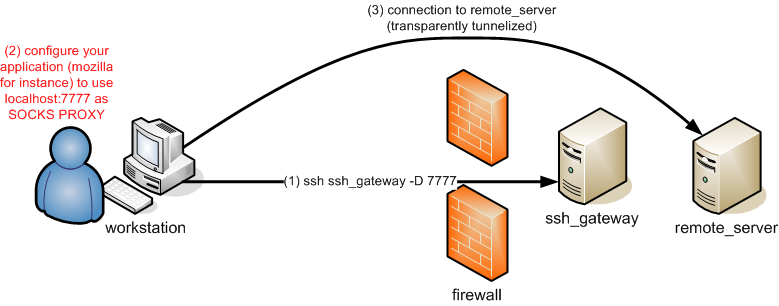
This means that a SOCKS5 proxy is more universal and can be used with more applications. A SOCKS5 proxy does not interpret the traffic sent through it in any way whereas an HTTP proxy typically does.In general terms, the HTTP proxy can only proxy HTTP (TCP) traffic whereas a SOCKS5 proxy can handle any type of traffic using either TCP or UDP.The current SOCKS5 and HTTP proxies differ in the following ways: The SOCKS4 and SOCKS4a protocols do not support UDP or authentication. The two most common types of proxies are HTTP (Hyper Text Transfer Protocol) and SOCKS5 (Secure Sockets 5). A proxy is more limited in that it cannot provide access to remote resources, but it can mask your IP address and provide geo-obfuscation services. For this reason, VPNs have recently seen a surge in popularity as both a geo-obfuscation tool to access content not available in the client computer’s country (such as US Netflix from outside the US), and as a privacy tool to prevent the client’s IP address from being discovered. One of those network resources can be access to the internet, which masks the IP address of the remote computer. The intent of a VPN is to allow a remote client computer to access network resources in some other location as if it were physically located in the same office. In contrast, using a proxy requires each application to be individually configured to ensure its traffic goes through the proxy. No individual application configuration is required.

A VPN routes all of the network traffic on a client computer through a tunnel to some other server computer. Proxies and VPNs differ in nature, although they can provide some of the same services. host-resolver-rules="MAP * ~NOTFOUND, EXCLUDE 127.0.0.Proxies and Virtual Private Networks (VPNs) There is a workaround however that entails passing a couple of parameters when starting the browser: -proxy-server="socks5://127.0.0.1:1337" SOCKS5 in Chromium Based BrowsersĬhromium based browsers (Chrome, Brave, etc) only seem to have the option to use the system wide proxy, which is undesirable in many use cases. This will use your ~/.ssh/config entry for 'proxy-nickname', and setup the SOCKS5 proxy to be accessible on the local machine on port 1337 (so you'll generally just be adding '127.0.0.1:1337' as your SOCKS5 proxy in whatever applications you want to use the proxy). For instance: ssh -D 1337 -C -N -vvv proxy-nickname Since this is just SSH you can make use of any entries defined in ~/.ssh/config to simplify the command, and while you are getting the proxy setup it's nice to omit the background and quiet arguments, and add verbosity ( -vvv) so you can watch the terminal output to ensure traffic is routed over the proxy as expected. -N: Indicate that no command will be sent when tunnel is up.-D: Indicate we want a SOCKS tunnel on the given port (between 106).-i: The path to the SSH key (on the local machine) used to connect to the host.Here's the example from the guide: ssh -i ~/.ssh/id_rsa -D 1337 -f -C -q -N -p 22 It routes all protocols (as opposed to just routing HTTP/HTTPS traffic in the case of an HTTP proxy)ĭigital Ocean has a great guide for setting up a SOCKS5 proxy.
#SSH PROXY SOCKS5 INSTALL#
It just uses SSH (it's just an SSH tunnel essentially over which an application's traffic may be routed) - no need to install separate programs.There are two nice things about a SOCKS5 proxy:

For example if you are using Thunderbird, you can give Thunderbird your SOCKS5 proxy settings which will force all Thunderbird traffic over the proxy, and Google will only ever see your email account related requests coming from the proxy machine IP address instead of your own. For instance if you must have a Google Email / G Suite / Google Workspace account for work but you don't want Google collecting your IP address and location tied to your account, you can use a SOCKS5 to hide your IP address. This can be desireable for a number of reasons, one of which includes obscuring your actual IP address from various applications, websites, and services. A SOCKS5 proxy is a nice flexible tool for routing a certain application's (or system's) traffic through a different machine.


 0 kommentar(er)
0 kommentar(er)
